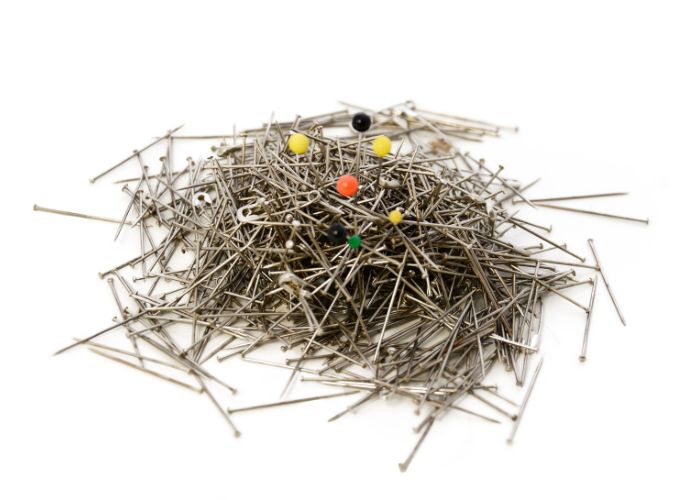Quality quilting pins are one accessory every quilter needs. However, keeping them organized can be a daunting task. Not only does proper organization save time, but it also enhances safety and efficiency in your quilting projects. In this article, you’ll discover the best ways to organize your quilting pins, ensuring they’re always within reach and in perfect condition.
1. Magnetic Pin Holders
Magnetic pin holders are a fantastic option for keeping your quilting pins in one place. The strong magnet ensures the pins stay put, reducing the risk of them scattering all over your workspace. It’s also incredibly convenient to grab a pin quickly without worrying about spilling them. Just wave the holder near your pins, and voila, they’re secured in place.
2. Pincushions
Pin cushions have been a quilters’ best friend for generations. They come in various shapes and sizes, and you can even make your own to match your style. Pin cushions keep your pins easily accessible and prevent them from rolling away. Some pincushions also come with wrist straps, allowing you to wear them while you work for even greater convenience.
3. Pin Organizers
Pin organizers are another excellent solution, especially if you have different types of pins. These organizers often come with compartments that allow you to sort your pins by size, type, or purpose. This organizational tool makes it easy to find the exact pin you need for your current project.
4. Pin Trays
Pin trays are simple yet effective. These shallow trays keep your pins in one place and make it easy to pick them up when needed. Some pin trays come with magnetic bases, adding an extra layer of security to ensure your pins don’t spill. They’re also great for keeping on your sewing table for quick access.
5. Pin Books
Pin books are a creative and practical way to store your quilting pins. These books have felt or fabric pages where you can stick your pins, keeping them organized and safe. Pin books are portable. This portability makes them perfect for quilters who like to take their projects on the go.
Sorting and Labeling Tips
Sorting and labeling your pins can save you a lot of headaches. Start by sorting them by size, type, and purpose. Label each section clearly to make it easy to grab the right pin for the job. This practice keeps your workspace tidy and speeds up your quilting process.
Pin Rust and Damage Prevention Techniques
Pins can rust and become damaged over time, especially if you don’t store them properly. Keep your pins in a dry place, and consider using silica gel packs in your storage containers to absorb moisture. Regularly inspect your pins for rust or damage and replace any that are no longer in good condition.
Properly organizing your quilting pins can make a difference in your quilting and sewing projects. It saves time and ensures that your pins are in top condition and ready to use. Try out these tips and see how they can improve your quilting experience.

















